Understanding Emotional Mapping and Its Role in Healing
Emotional mapping is a powerful, visual technique that helps individuals explore, recognize, and organize their emotional experiences. Its applications extend beyond research into therapeutic settings, providing a vital tool in recovery from addiction, injury, or mental health struggles. By mapping feelings and understanding their origins, individuals gain insights that facilitate healing, resilience, and long-term well-being.
Defining Emotional Mapping in Recovery Contexts
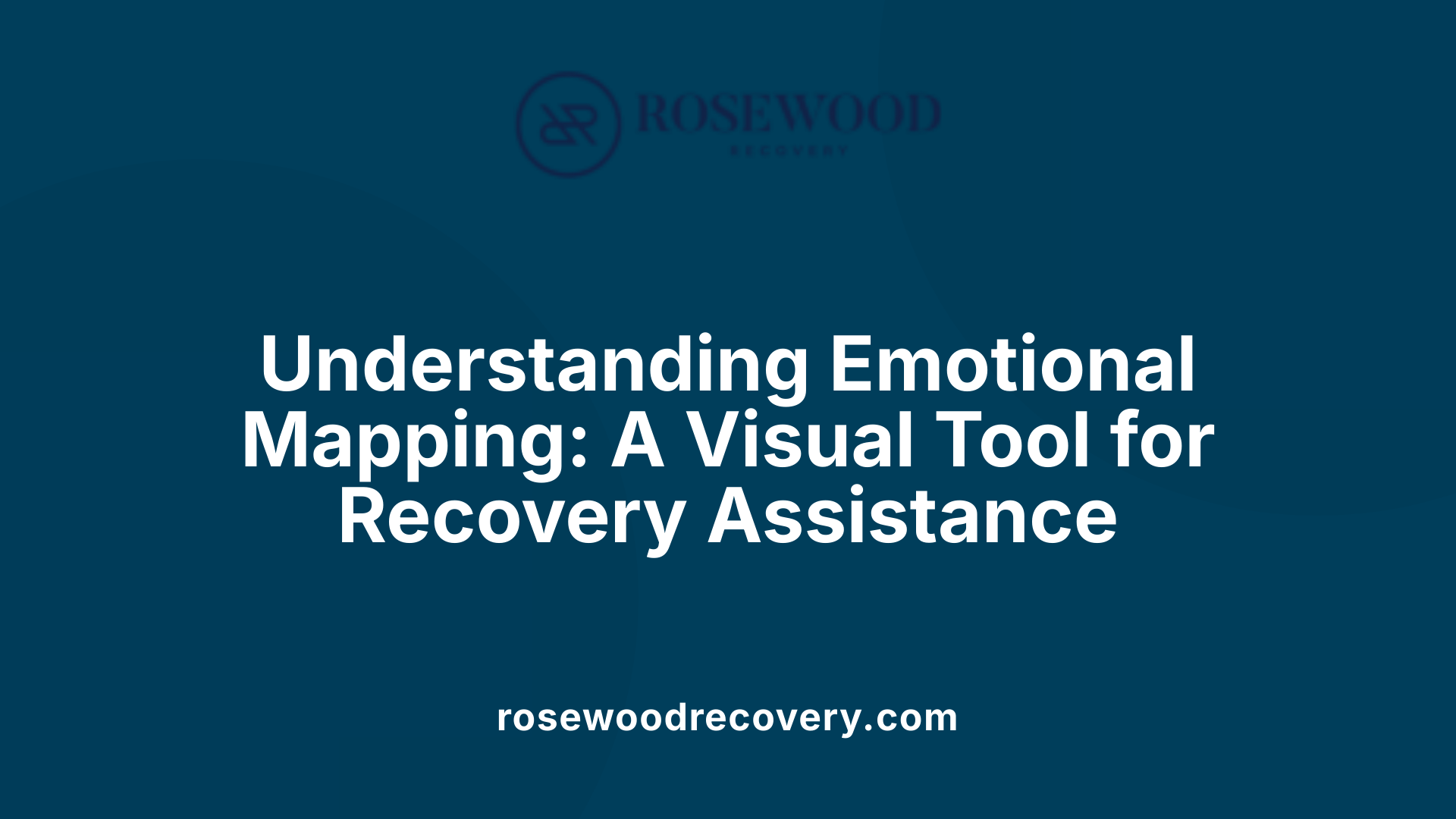
What is emotional mapping and how does it aid in recovery?
Emotional mapping is a visual and experiential method used to explore and understand the emotions people experience in various spaces, especially during recovery from injury or mental health challenges. It involves creating diagrams or maps that display where specific emotions are felt and how they connect to different areas or situations.
This method helps individuals gain a clearer picture of their emotional landscape. For example, athletes recovering from injury can map out emotions felt in physiotherapy rooms or gyms, revealing complex feelings that might have previously gone unnoticed. Through this process, they can identify emotional triggers and conflicts, promoting greater self-awareness.
Therapists and clients often use techniques such as diagrams, free association, and narration to deepen understanding. The maps often include symbols or colors—green for positive feelings, red for negative ones, and neutral symbols—to illustrate the emotional state across different locations or activities.
The visualization encourages honest reflection without judgment, making it easier to address underlying emotional patterns. As clients see their emotional responses mapped out, they can recognize recurring themes, develop emotional resilience, and enhance their capacity to cope with stress and setbacks.
Overall, emotional mapping is a valuable tool in recovery, fostering emotional coherence and strength. It facilitates a better understanding of how physical spaces, personal memories, and social interactions influence emotional wellbeing, ultimately supporting a healthier recovery process.
The Significance of Emotional Mapping in Healing and Self-Awareness
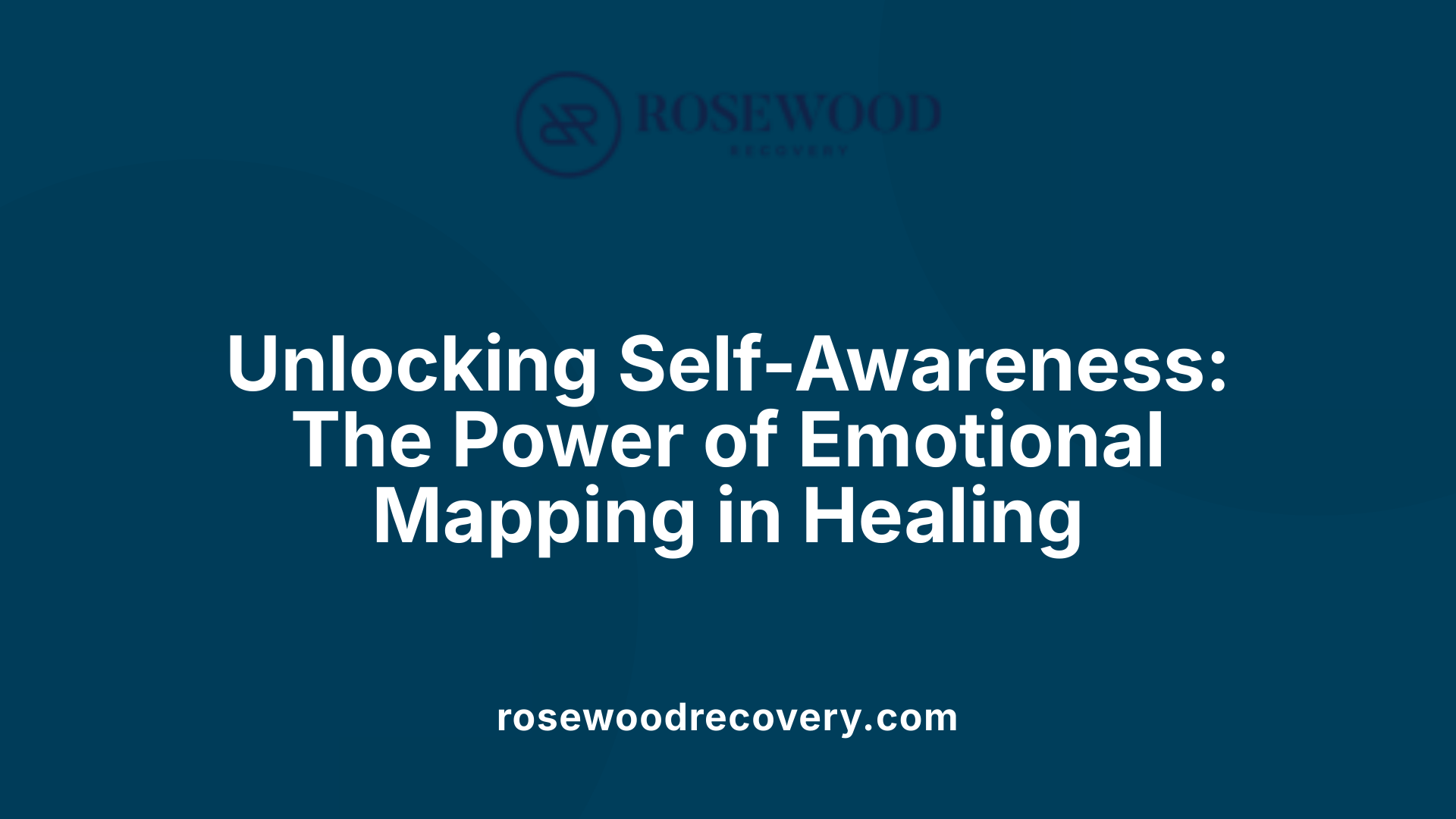
Why is emotional awareness important in recovery strategies?
Emotional awareness plays a crucial role in recovery, especially for individuals dealing with long-term injury or addiction. It involves recognizing and understanding one’s feelings—an essential step toward emotional intelligence. When people become more aware of their emotions, they gain better control over their reactions, helping them manage triggers and reduce stress.
This awareness allows for thoughtful responses rather than impulsive actions, which is vital in avoiding relapse and supporting ongoing healing. Moreover, understanding emotions fosters empathy and improves communication, vital for rebuilding relationships that may have been strained during struggles with injury or addiction.
In addition, emotional awareness helps uncover unconscious feelings linked to past experiences being stored in the body. As Louise Hay and other practitioners suggest, emotional blockages can manifest as physical pain or ailments. Recognizing these emotions enables targeted healing, whether through techniques like journaling, breathwork, or gentle self-care.
Building emotional awareness is also associated with developing resilience, meaning the ability to bounce back from setbacks. It encourages honest self-reflection, acceptance, and compassion—elements that create a supportive environment conducive to recovery.
How does emotion mapping enhance self-understanding?
Emotion mapping functions as a personal GPS, charting emotional experiences across different areas of life. It involves identifying where and when specific feelings occur, thereby revealing patterns that might support or hinder happiness and well-being.
By visualizing emotions in particular spaces—such as physiotherapy rooms, gyms, or home environments—athletes and individuals in recovery can gain insights into emotional conflicts or triggers. For instance, shared spaces might evoke complex feelings like guilt or frustration, which emotion mapping can help uncover.
This process often employs tools like diagrams, word clouds, or bodily sensation awareness to unpack feelings. For example, mapping which side of the body feels tense can relate to stored emotions—left side reflects past experiences and emotional self, while the right side relates to future expectations and social interactions.
Using techniques like the Feelings Wheel helps individuals categorize and articulate their emotions, promoting greater self-awareness. Recognizing these feelings facilitates better coping strategies, emotional regulation, and resilience-building.
Practical benefits of emotion mapping in recovery
Overall, emotion mapping empowers individuals by providing clear visualizations of their emotional landscape. It supports self-understanding by highlighting emotional triggers and strengths, fostering honest reflection without judgment. This awareness is a vital step toward healing, personal growth, and sustained sobriety.
Furthermore, incorporating emotion mapping in therapy or support groups can enhance communication, increase emotional intelligence, and promote a deeper understanding of oneself. The method is accessible and engaging, making it a valuable tool for anyone seeking to improve emotional well-being and resilience in recovery journeys.
Emotional Mapping as a Tool for Understanding and Processing Emotions
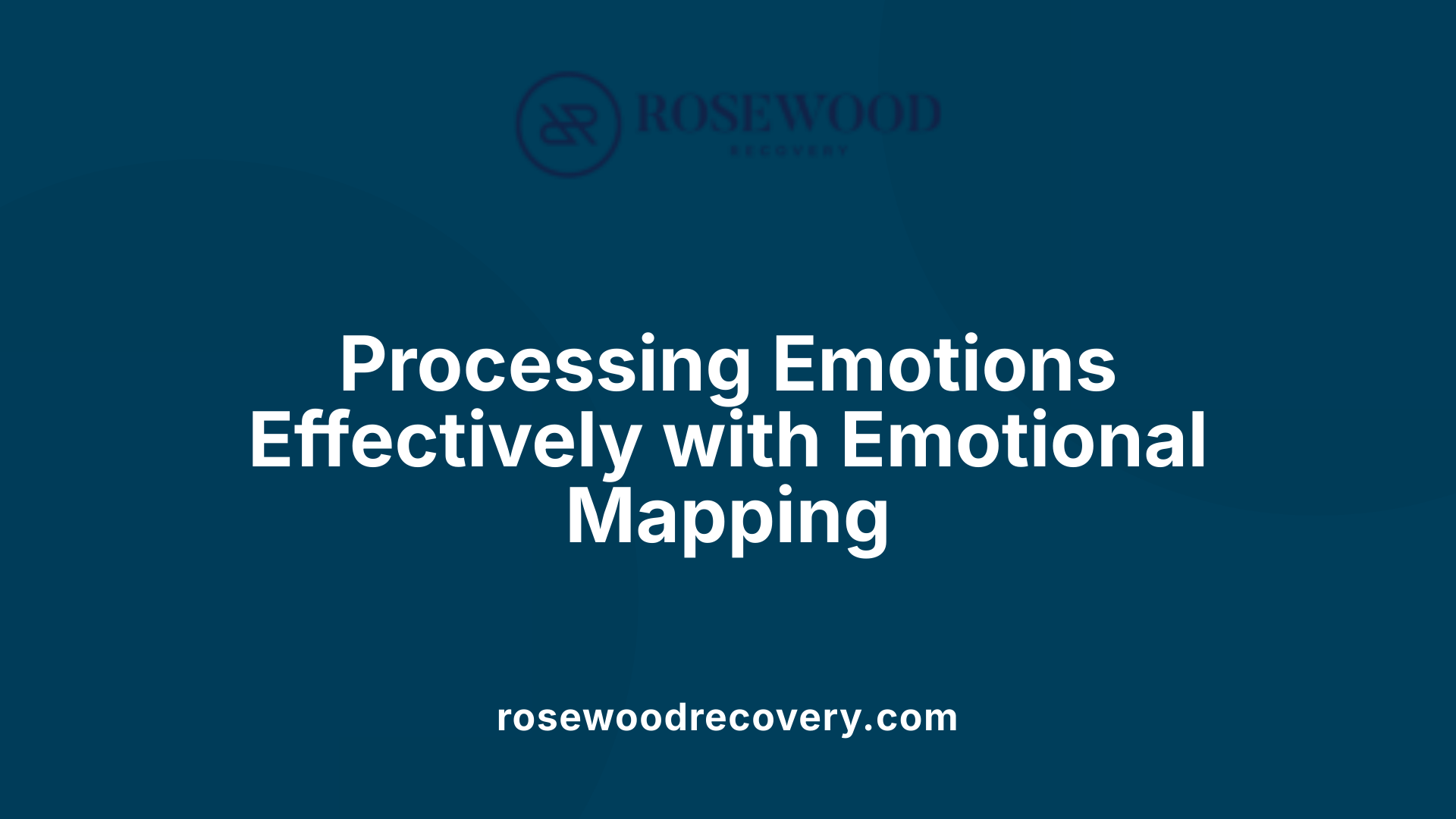
How does emotional mapping support psychological recovery and healing?
Emotion mapping is an innovative approach that helps individuals explore their emotional landscape through visual and tactile methods. When used in therapy and personal growth, it allows for a concrete understanding of complex feelings that are often difficult to articulate.
This method facilitates self-awareness by revealing emotional conflicts and 'hot spots'—areas or moments tied to intense feelings—within physical spaces or memories. For injured athletes, for example, mapping their emotions around physiotherapy rooms or gyms uncovers feelings like frustration, shame, or hope that may otherwise remain unconscious.
Creating maps coupled with narratives enables individuals to describe their emotional states in detail. This storytelling aspect deepens understanding and gives a voice to hidden emotions. As clients see their feelings represented visually, it becomes easier to identify negative patterns such as fear or anger, and to work through these within a supportive framework.
In therapy, emotion mapping acts as both an assessment tool and a healing device. It helps practitioners spot emotional conflicts and design targeted interventions. For instance, recognizing that certain spaces evoke shame can lead to specific exercises aimed at reframing these feelings.
Furthermore, this approach empowers individuals by making their inner experiences tangible. It supports emotional processing, reduces psychological barriers, and fosters resilience. Over time, emotion mapping encourages healthier emotional regulation, promotes healing, and enhances overall mental well-being.
Technical Tools and Techniques in Emotional Mapping
What tools are commonly used for emotional mapping, and how are they applied?
In emotional mapping, several visual and reflective tools are utilized to help individuals recognize and understand their emotions more clearly. The Feelings Wheel and cognitive-affective maps are among the most prominent.
The Feelings Wheel, developed by psychologist Gloria Willcox, provides a structured way to identify emotions by branching from primary feelings to more nuanced ones. It helps individuals pinpoint what they are feeling with greater precision, deepening self-awareness. This tool is often used in therapy or self-reflection exercises where people color-code or mark specific feelings, making emotional states tangible.
Similarly, Plutchik’s Wheel of Emotions, created by psychologist Robert Plutchik, displays a range of core emotions—such as joy, sadness, anger, and fear—and illustrates their intensities and relationships. This visual aids in understanding how emotions interact, blend, or oppose each other, fostering emotional literacy.
Both these tools are applied in various ways, including visualization exercises, coloring pages, or reflective journaling. They serve to enhance emotional intelligence, facilitate communication, and help manage triggers or emotional conflicts.
Apart from visual tools, techniques such as free association and bodily sensation awareness are used during emotional mapping sessions. Free association encourages individuals to verbalize or write down thoughts and feelings that come spontaneously, revealing subconscious emotional patterns.
Bodily sensation awareness involves paying attention to physical cues—like tightness, warmth, or tingling—that are often linked to emotional states. Recognizing these sensations can uncover underlying feelings not immediately accessible through conscious thought.
Using these methods together, emotional mapping becomes a comprehensive process of recognizing, unpacking, and understanding feelings, ultimately supporting emotional resilience and well-being.
Benefits of Emotional Mapping in Treatment Settings
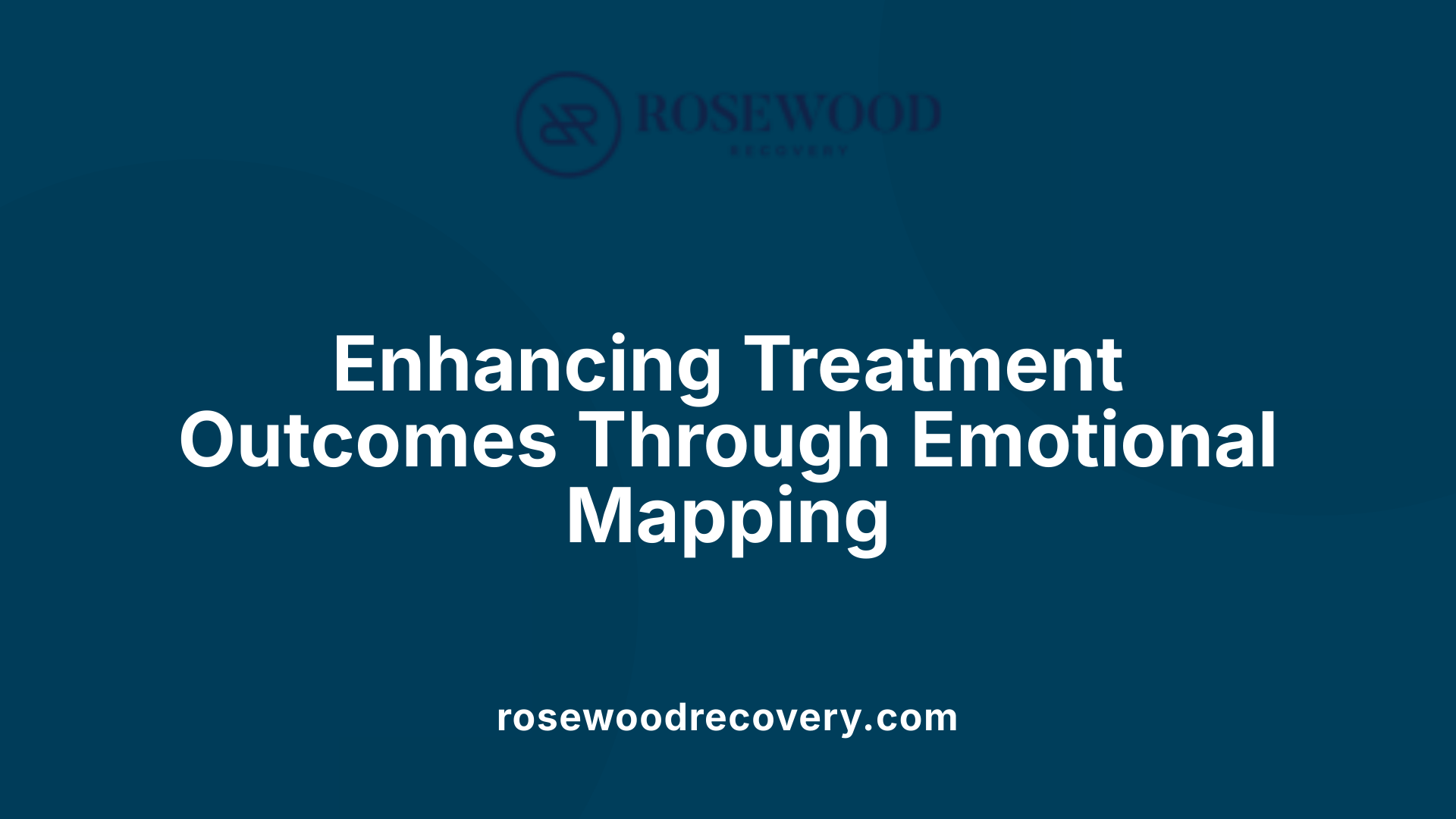
What are the benefits of emotional mapping in addiction and mental health treatment?
Emotional mapping serves as a powerful tool within addiction and mental health programs by helping individuals recognize and understand their emotional responses to different spaces and situations. This method uncovers complex emotional patterns that often go unnoticed, enabling clients to identify triggers that may lead to substance use or emotional distress.
Through creating visual maps of their emotional experiences, individuals can pinpoint specific emotions associated with certain environments or interactions. This awareness facilitates honest self-reflection and fosters emotional honesty, which are critical in developing resilience and effective coping skills.
Moreover, emotional mapping nurtures a sense of connection and validation. When clients see and articulate their emotional landscapes, they often feel more understood and accepted, reducing feelings of loneliness or shame. This deeper understanding strengthens therapeutic alliances and promotes trust, which are essential for successful recovery.
Building emotional regulation is another significant benefit. As individuals learn to recognize their emotional states—such as anger, guilt, or anxiety—they can employ strategies like mindfulness, journaling, or breathwork to manage these feelings proactively. These skills improve overall emotional resilience, helping clients navigate setbacks or stressors without resorting to substances.
In clinical practice, emotional mapping also enhances social support. It encourages open communication in therapy groups or family settings, leading to increased empathy and compassion among members. Visualizing emotional interactions within family dynamics can highlight areas of conflict and opportunities for healing.
Research and practical applications demonstrate that incorporating emotional mapping into treatment supports sustained mental health and long-term sobriety. It empowers individuals to take an active role in their emotional health, fostering self-awareness and self-management—cornerstones of recovery.
Application in addiction and mental health programs
In addiction recovery, emotional mapping helps clients identify emotional triggers linked to cravings or relapse risks. When clients understand which emotions—like shame or fear—are linked to substance use, they can develop targeted strategies to address these feelings.
Similarly, in broader mental health contexts, emotional mapping supports individuals in managing mood disorders, trauma, and stress. By visualizing their emotional states over time, clients can track progress, recognize patterns, and share insights with therapists for personalized interventions.
Building emotional resilience and regulation
Developing emotional resilience is vital in recovery. Emotional mapping encourages self-awareness and gentle exploration of feelings, making it easier to accept and process challenging emotions without judgment.
Practices such as mindfulness or journaling complement this process, leading to greater emotional control and stability. As individuals become adept at managing their feelings, they experience less emotional overwhelm, improve relationships, and bolster their capacity to cope with life's inevitable ups and downs.
By integrating emotional mapping into treatment, practitioners provide clients with a valuable map for navigating their emotional journeys, supporting sustained recovery and well-being.
The Emotional Map Strategy in Practice
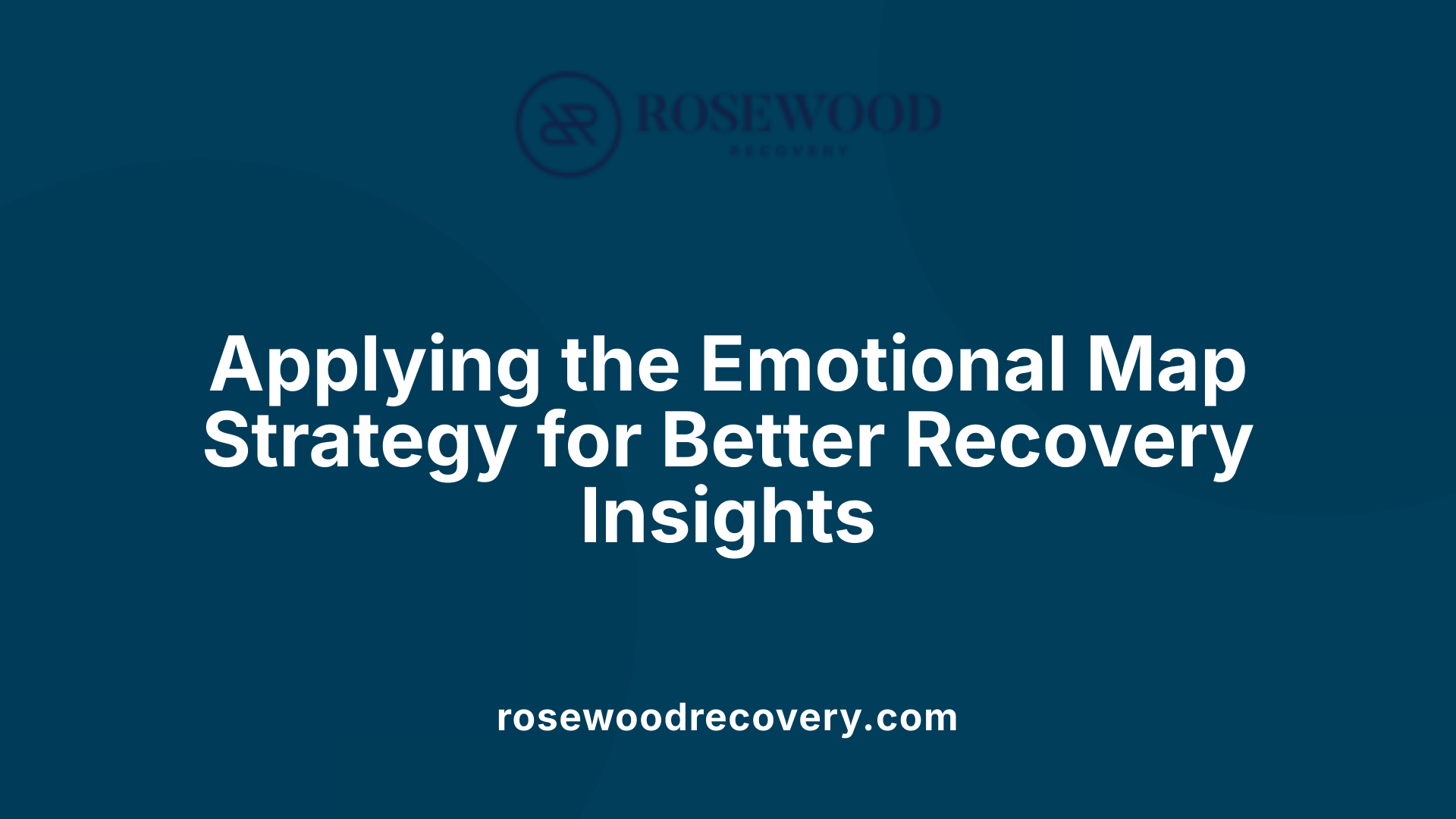
What is the emotional map strategy, and how does it work?
The emotional map strategy, such as the Emotional Journey Map, is a visual tool designed to capture and explore a person’s feelings, thoughts, and experiences during their treatment and recovery from substance use disorder (SUD). It functions as a personal health navigator by graphically representing the emotional highs and lows encountered throughout different stages of recovery.
This approach involves mapping out key phases—ranging from initial awareness of the problem and seeking help, to engaging in care, undergoing treatment, and aiming for long-term sobriety. Each phase is highlighted with significant touchpoints, emotional responses, and critical moments of realization or challenge. For instance, a patient might identify feelings of shame during initial diagnosis or hope during early recovery.
By visualizing these emotional landscapes, clinicians and patients can better understand obstacles like stigma, systemic barriers, or personal fears. It also illuminates moments of relief and hope, which can be pivotal for motivation.
The process typically includes techniques like drawing, narration, and identifying bodily sensations associated with different feelings. This comprehensive mapping fosters a deeper understanding of emotional patterns, helping tailor intervention strategies to meet individual needs.
In practice, personalized recovery plans can be developed based on these maps. For example, recognizing periods of heightened anxiety might lead to targeted mindfulness or therapy sessions.
Overall, the emotional map strategy offers a holistic, patient-centered approach that enhances engagement, validates emotional experiences, and supports sustained recovery. It makes the complex, often nonlinear journey of recovery clearer, encouraging resilience and emotional awareness at every step.
The Future of Emotional Mapping and Recovery Research
Emerging trends and innovations
The field of emotional mapping is continuously evolving, driven by innovative techniques and greater understanding of emotional and physical health. One promising development is the integration of technology, such as virtual reality and mobile apps, to create real-time, interactive maps of emotional states. These tools can help athletes and individuals in recovery track their feelings dynamically, providing immediate feedback and personalized insights.
Furthermore, advances in neurotechnology, including neurofeedback and brain imaging, are opening new pathways for understanding how emotional experiences correlate with brain activity. This convergence of emotional mapping and brain mapping enables a more comprehensive approach—connecting emotional responses with specific neural patterns, thereby creating tailored interventions.
Another innovation lies in the personalization of emotional mapping techniques, making them more accessible and engaging through gamification or through community-based platforms where shared experiences can foster peer support. In addition, therapy-focused adaptations utilize emotion maps to visualize progress over time, helping clients and therapists identify patterns and areas needing attention.
Potential integration with brain and trauma mapping
The future of emotional mapping holds significant potential for combining it with brain and trauma mapping technologies. Brain mapping methods like EEG, fMRI, and qEEG can identify overactive or underactive brain regions associated with emotional dysregulation, trauma, or addiction.
Integrating this data with emotional maps can offer a layered understanding of how traumatic memories or emotional conflicts manifest both psychologically and physically. For example, recognizing that certain body areas or emotional responses align with specific neural activity can deepen therapeutic insights.
Trauma mapping, which identifies neural and emotional responses to past traumas, can benefit from emotional mapping to visualize how these memories affect current behaviors and emotional states. Such integration can enhance trauma-informed care, guiding interventions that address both the mind and body.
This holistic approach is anticipated to improve personalized treatment plans, fostering better emotional resilience and recovery outcomes. As these technologies become more sophisticated and accessible, their combined use may revolutionize how mental health, addiction, and injury rehabilitation are understood and supported for athletes and the general population alike.
Summarizing the Impact of Emotional Mapping on Recovery and Well-being
How does emotional mapping support psychological recovery and healing?
Emotional mapping plays a valuable role in facilitating psychological recovery by offering a clear, visual representation of a person's emotional landscape. This method allows individuals to identify and explore their complex, often concealed feelings, making emotional conflicts more tangible and manageable.
By creating maps of spaces linked to specific emotions, such as treatment rooms or recovery environments, individuals gain insight into how these places influence their mental health and emotional states. Narratives accompanying the maps deepen understanding, enabling clients to articulate emotions like shame, anger, or fear that may otherwise remain unexamined.
In therapy, emotion mapping functions both as an assessment tool and an intervention. It helps identify emotional 'hot spots'—areas or situations where negative feelings are intense—thereby targeting these in treatment. Clients often find the process engaging and accessible, which encourages honest self-reflection without judgment.
This technique also uncovers underlying emotional patterns and conflicts, empowering individuals to develop healthier coping strategies. Recognizing how specific spaces evoke certain emotions can assist in managing triggers and reducing stress.
Overall, emotional mapping fosters greater self-awareness that is essential for emotional healing. By linking space, emotion, and personal narratives, the practice supports resilience and longer-term psychological well-being, making it a powerful tool in the journey toward recovery.
Harnessing Emotional Mapping for Lasting Recovery
Incorporating emotional mapping into recovery processes offers a transformative approach to understanding and managing emotions. By visually charting feelings, patterns, and triggers, individuals can foster greater self-awareness, resilience, and emotional coherence. Whether used in clinical interventions, self-guided practices, or as part of therapeutic programs, this technique empowers individuals to navigate their emotional landscapes with clarity and confidence. As research continues to evolve, the integration of emotional mapping with brain and trauma recovery tools promises even greater potential for sustained recovery and well-being.
References
- Emotion mapping: Exploring creative methods to understand the ...
- The Power of Mapping Your Emotions - Sounds True
- Mapping Stored Emotions in the Body as a Means of Healing ...
- Mapping Emotional Change in Psychotherapy | Psychology Today
- Emotional Intelligence and its Role in Addiction Recovery
- Mapping mental health recovery tools developed by mental health ...
- What is Brain Mapping Therapy and What is It Used For?
- The Importance of Identifying Your Feelings: A Key to Addiction ...
- Where Joy Hides: How to Cultivate Happiness in Recovery



.jpeg)
